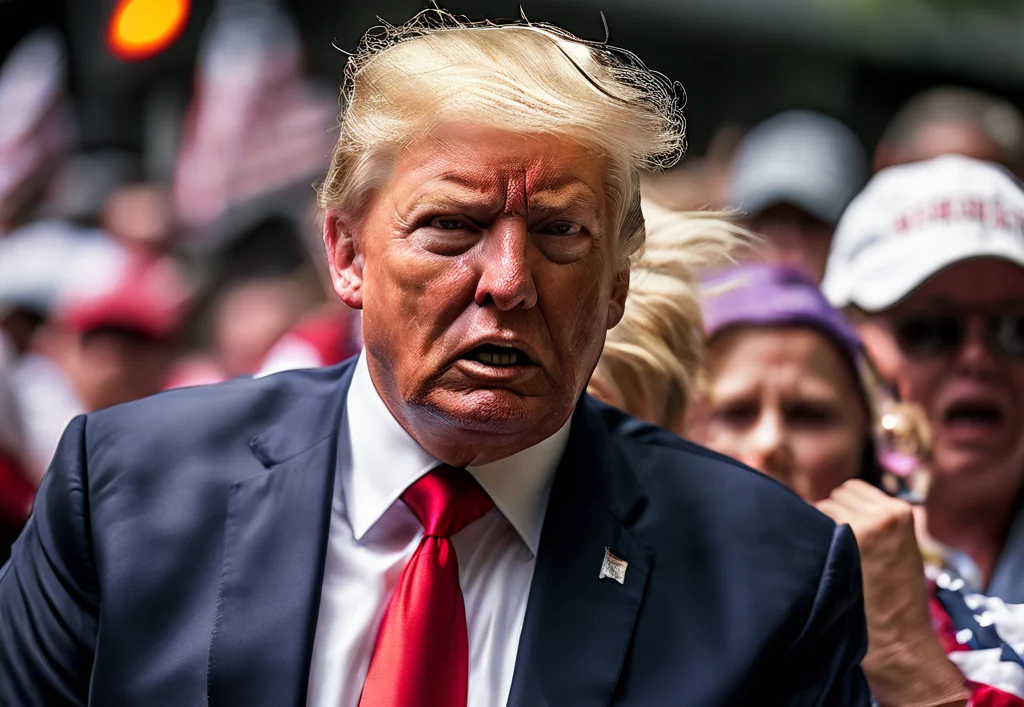Rep. James Comer, the Republican chairman of the House Oversight and Accountability Committee, has issued a subpoena to Secret Service Director Kimberly Cheatle, compelling her to testify about the recent assassination attempt on former President Donald Trump.
The hearing is scheduled for July 22, 2024, as part of the committee’s investigation into the security breach that occurred during a campaign rally in Pennsylvania on July 13.
The Incident
On July 13, 2024, former President Donald Trump was speaking at a campaign rally in Butler, Pennsylvania, when a gunman opened fire. The shooter, identified as 20-year-old Thomas Matthew Crooks, managed to approach within 135 meters of the stage.
Despite heightened security measures due to a threat from Iran, Crooks was able to ascend a structure with a clear line of sight to Trump before opening fire. Trump sustained an injury to the upper part of his right ear and was swiftly removed from the stage by Secret Service agents.
The shooter was neutralized by agency snipers, but the incident resulted in one fatality and two critical injuries among the attendees.
Immediate Aftermath
In the immediate aftermath, the scene at the rally was chaotic. Eyewitnesses recounted a violent and confusing situation as attendees scrambled to assist the wounded amid the commotion. Despite being struck by a bullet, Trump reassured the public of his overall well-being and later departed for Newark, New Jersey.
President Joe Biden condemned the attack, emphasizing that there is no place for such violence in America and expressing gratitude for the swift actions of the Secret Service.
Security Lapses
The shooting has raised serious questions about the Secret Service’s security protocols and their effectiveness in protecting high-profile individuals. Several critical lapses have been identified:
- Pre-event Research and Monitoring: Security experts have pointed out a fundamental failure in pre-event research and real-time monitoring. Crooks was able to occupy a raised position, such as a rooftop, without being detected, suggesting inadequate threat assessment and monitoring during the event.
- Perimeter Security: Despite attendees having to pass through security checkpoints, including magnetometers, the gunman was able to evade these checks and reach a position from which he could fire.
- Real-time Response: The Secret Service did not seem to be aware of the armed individual on the rooftop until he opened fire. This indicates a breakdown in the agency’s threat assessment and real-time monitoring capabilities.
Congressional and Federal Investigations
In response to these concerns, several actions have been taken:
- Department of Homeland Security Investigation: The DHS inspector general has initiated an inquiry into the security measures provided by the U.S. Secret Service during the Pennsylvania rally. The investigation aims to evaluate the procedures employed in safeguarding the ex-President during the campaign event.
- Presidential Review: President Joe Biden has instructed an external evaluation of the security arrangements at the rally.
- Congressional Oversight: The House Oversight Committee, led by Rep. Comer, is conducting its own investigation into the incident, culminating in the subpoena of Director Cheatle.
Secret Service’s Response
Secret Service Director Kim Cheatle has emphasized the agency’s commitment to cooperating fully with both the review process ordered by President Biden and the congressional inquiries. The agency, responsible for protecting current and former presidents, their families, and other high-level officials, is working to understand how the shooting occurred and to prevent similar incidents in the future.
Historical Context of Secret Service Reforms
The Secret Service has undergone significant changes in response to previous high-profile incidents. Following the attempted assassination of President Ronald Reagan in 1981, the agency made reforms aimed at enhancing presidential security, including stricter screening procedures, upgraded vehicle security, and intensified training programs.
Earlier incidents, such as the assassination of President John F. Kennedy in 1963 and the attempted assassination of President Gerald Ford in 1975, also prompted changes in security strategies.
Potential Changes and Future Security Measures
In light of the recent assassination attempt, the Secret Service is likely to implement further changes to its protocols. Enhancing perimeter security, real-time monitoring, and communication between security personnel and attendees will be crucial in preventing similar incidents in the future. The agency’s protective mission, which includes safeguarding U.S. elections and ensuring the security of key facilities and major national events, will need to adapt to the evolving threat environment.
Media and Public Reaction
The incident has sparked a broader discussion about the challenges of providing security for high-profile political figures in an increasingly complex threat environment. The iconic image of a bloodied Trump being rushed off the stage by Secret Service agents has been widely circulated, potentially influencing public perception and the political discourse surrounding the upcoming presidential election.
As the investigations unfold, the outcome of these inquiries and Director Cheatle’s testimony may lead to significant changes in Secret Service protocols and resource allocation for future campaign events and public appearances by protected individuals.
Conclusion
The attempted assassination of former President Donald Trump has highlighted critical vulnerabilities in the Secret Service’s security protocols. The ongoing investigations by federal and congressional bodies aim to uncover the lapses that allowed the gunman to breach security and to implement measures to prevent future incidents.
As the Secret Service faces intense scrutiny, the agency’s commitment to transparency and cooperation will be essential in restoring public confidence and ensuring the safety of high-profile individuals in the future.
